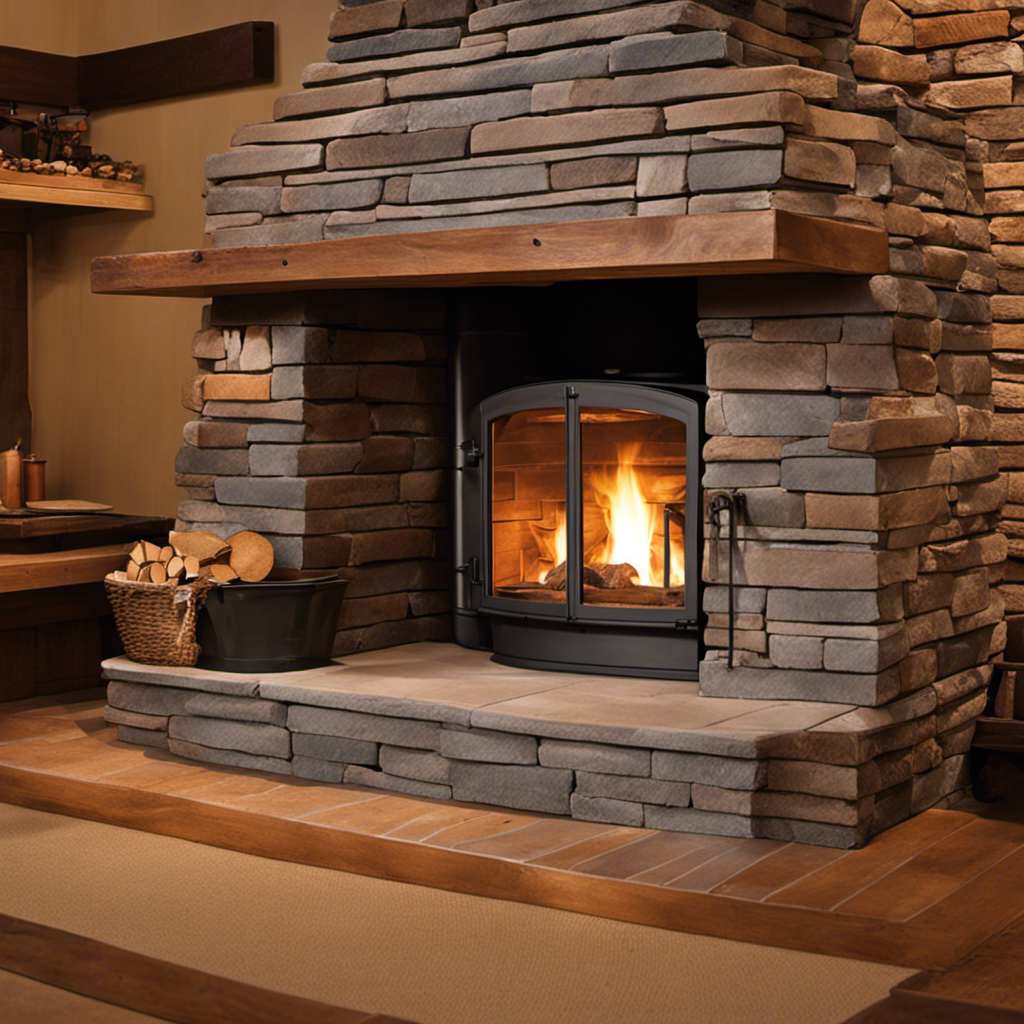I comprehend your worries: the thought of cleaning the heat exchanger in your wood stove may appear daunting. Nonetheless, trust me, it’s simpler than it looks.
In this guide, I’ll walk you through step-by-step instructions on how to effectively clean your wood stove’s heat exchanger. With the right tools and a little bit of time, you can ensure optimal performance and efficiency of your wood stove.
Let’s get started!
Key Takeaways
- The heat exchanger is a crucial component in the efficient functioning of a wood stove.
- Regularly cleaning the heat exchanger prevents blockages and ensures optimal heat transfer.
- Inspecting the exchanger for damage or corrosion helps identify potential issues early on.
- Using dry and seasoned wood minimizes creosote and soot formation.
Understanding the Heat Exchanger in Your Wood Stove
I find it important to understand the heat exchanger in my wood stove. The heat exchanger is a crucial component in the efficient functioning of the stove. Its design allows it to transfer the heat generated from burning wood to the surrounding air.
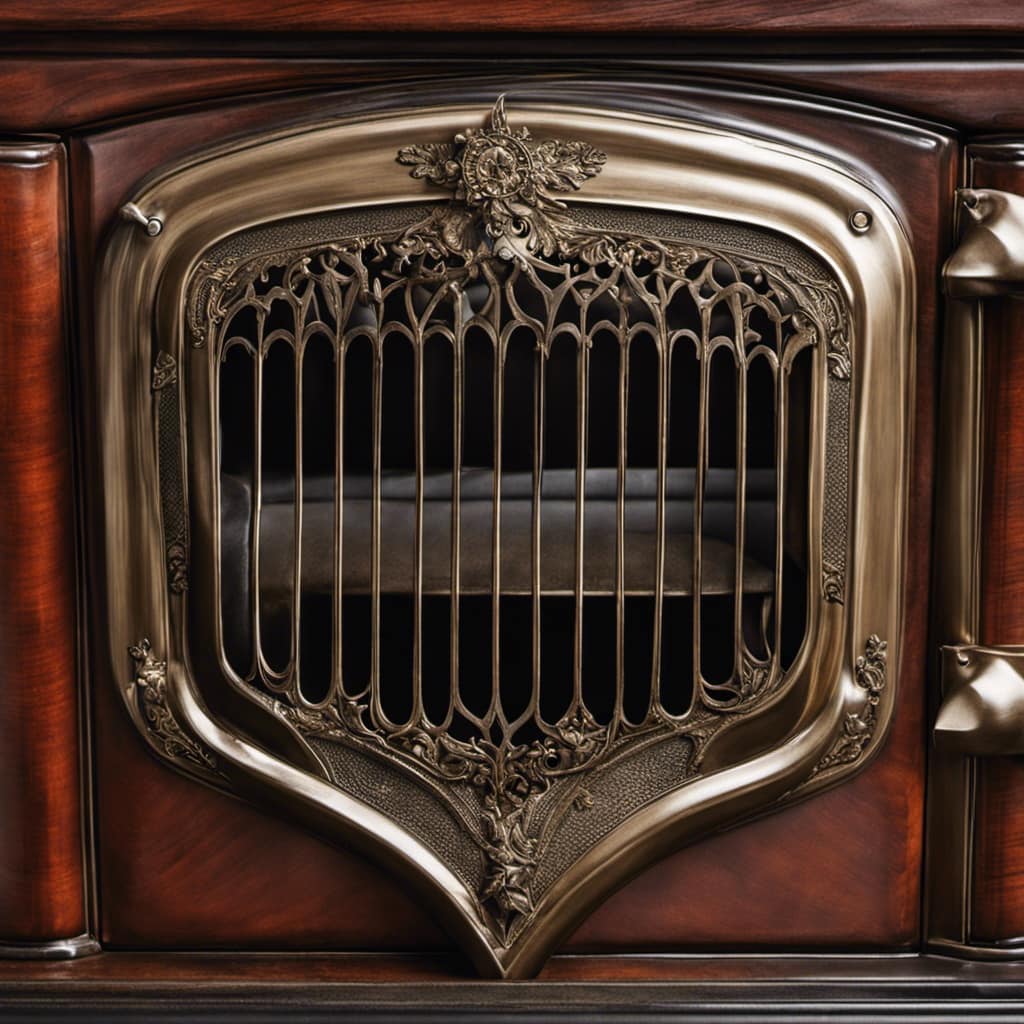
The heat exchanger consists of a series of tubes or fins that are in direct contact with the firebox. As the hot gases pass through the exchanger, they heat up the metal surfaces, which in turn transfer the heat to the air circulating around it.
This process helps to increase the heat output of the stove and maximize its efficiency. By utilizing a heat exchanger, I can enjoy the benefits of a more efficient and cost-effective heating system in my home.
Gathering the Necessary Tools and Supplies
To get started, I’ll need a few tools and supplies.
Cleaning a wood stove heat exchanger requires specific techniques and equipment. First, I’ll need a wire brush or chimney sweep brush to remove any built-up soot and debris from the heat exchanger surfaces. A vacuum cleaner with a brush attachment will also come in handy to suck up loose particles.

Next, I’ll need a scraper or putty knife to gently scrape off any stubborn residue. It’s important to avoid using abrasive materials that could damage the heat exchanger.
Additionally, I’ll need a soft cloth or sponge and a mild detergent solution to wipe down the surfaces and remove any remaining dirt.
Common issues to look out for during the cleaning process include clogged or blocked passages, rust or corrosion, and damaged seals.
Regular maintenance and cleaning will help ensure optimal performance and prevent any potential problems.
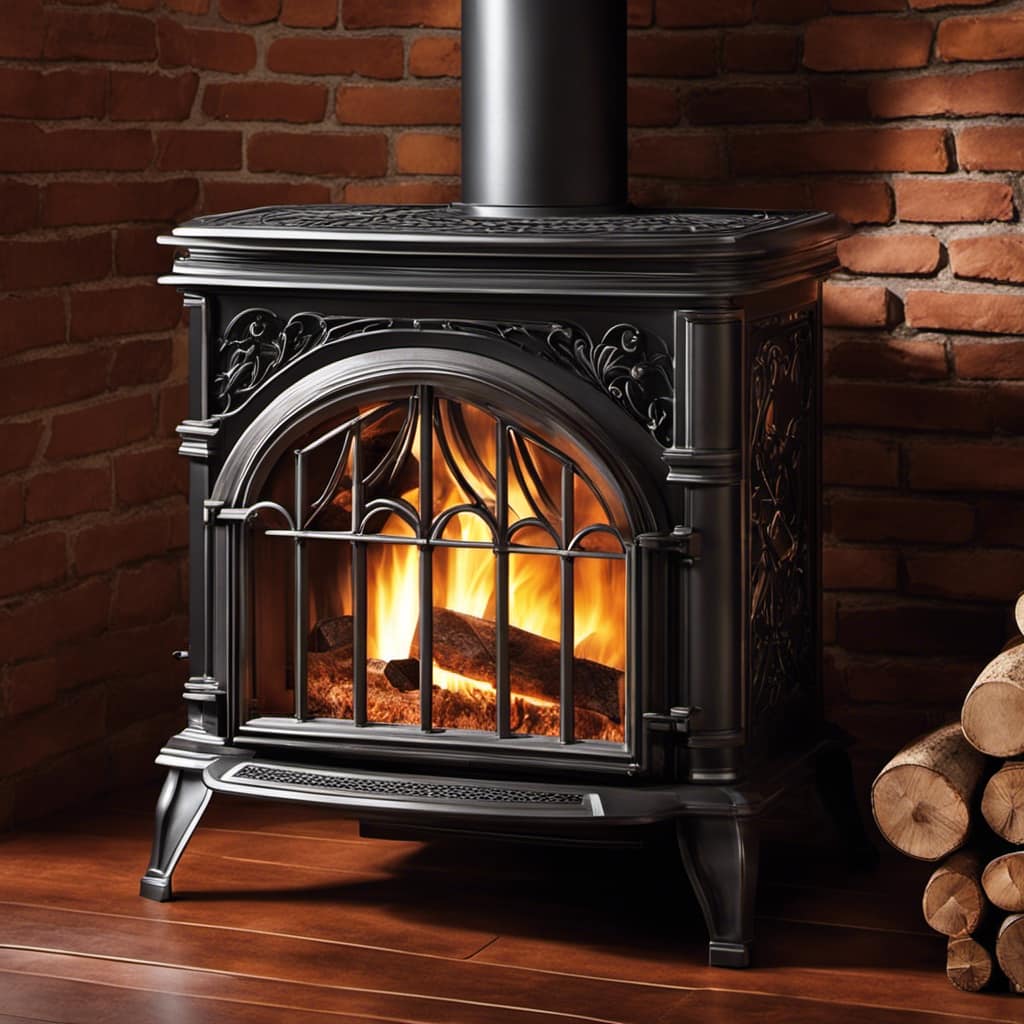
Step-by-Step Guide to Removing and Cleaning the Heat Exchanger
Removing and cleaning the heat exchanger requires a careful and systematic step-by-step approach.
Start by turning off the wood stove and allowing it to cool completely.
Once cool, remove the front panel of the stove to access the heat exchanger.
Use a screwdriver to remove any screws holding the heat exchanger in place.

Carefully detach the heat exchanger from the stove, taking note of any connections or attachments that need to be disconnected.
Once removed, use a soft brush or vacuum to remove any loose debris or ash from the heat exchanger.
For more stubborn build-up, mix a solution of warm water and mild detergent and use a cloth or brush to gently scrub the heat exchanger.
Rinse thoroughly and allow to dry completely before reattaching to the wood stove.
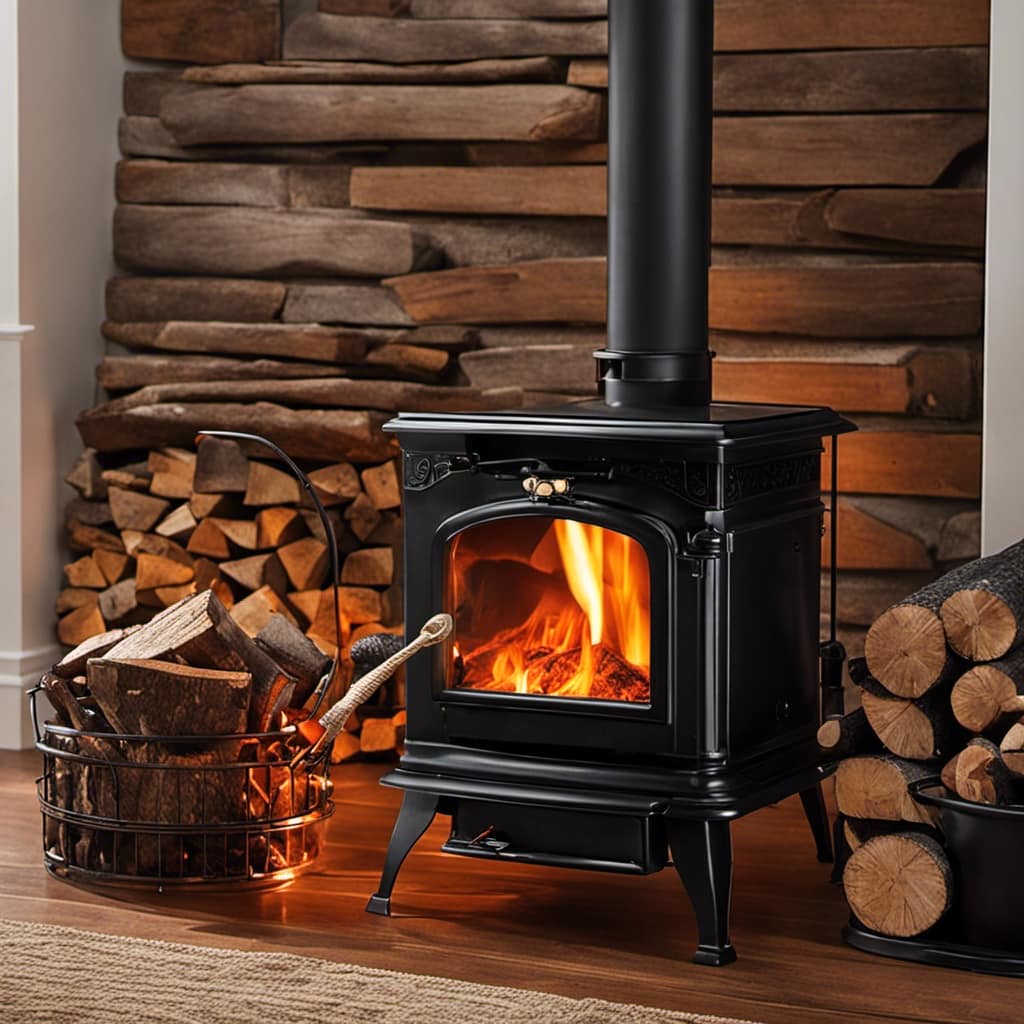
This regular heat exchanger maintenance will help improve the efficiency and longevity of your wood stove.
Now, let’s move on to some tips for proper maintenance and prevention of build-up.
Tips for Proper Maintenance and Prevention of Build-up
Regular maintenance and prevention techniques are essential for the efficient and long-lasting performance of my heating system. To ensure the proper functioning of my wood stove heat exchanger, I follow these preventive measures:
-
Regular cleaning: I clean the heat exchanger at least once a year to remove any build-up of soot or creosote. This prevents blockages and ensures optimal heat transfer.
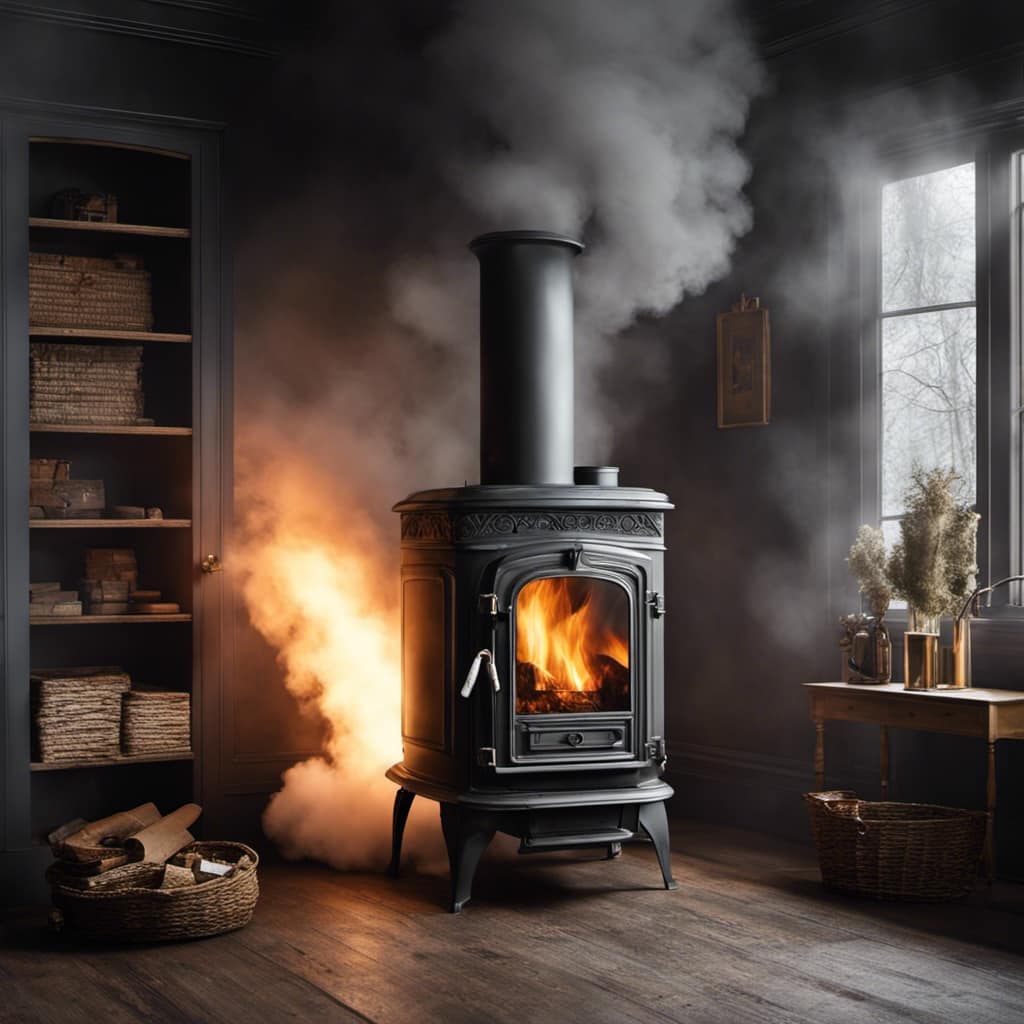
-
Inspection: I inspect the heat exchanger regularly for any signs of damage or corrosion. This helps me identify potential issues early on and take necessary actions.
-
Proper fuel selection: I use dry and seasoned wood to minimize the formation of creosote and soot. This reduces the chances of clogging and improves the overall efficiency of the heat exchanger.
By following these preventive measures, I can troubleshoot common issues and maintain the performance of my wood stove heat exchanger.
After thorough cleaning, I’ll now move on to the next step of reinstalling and testing the cleaned heat exchanger.
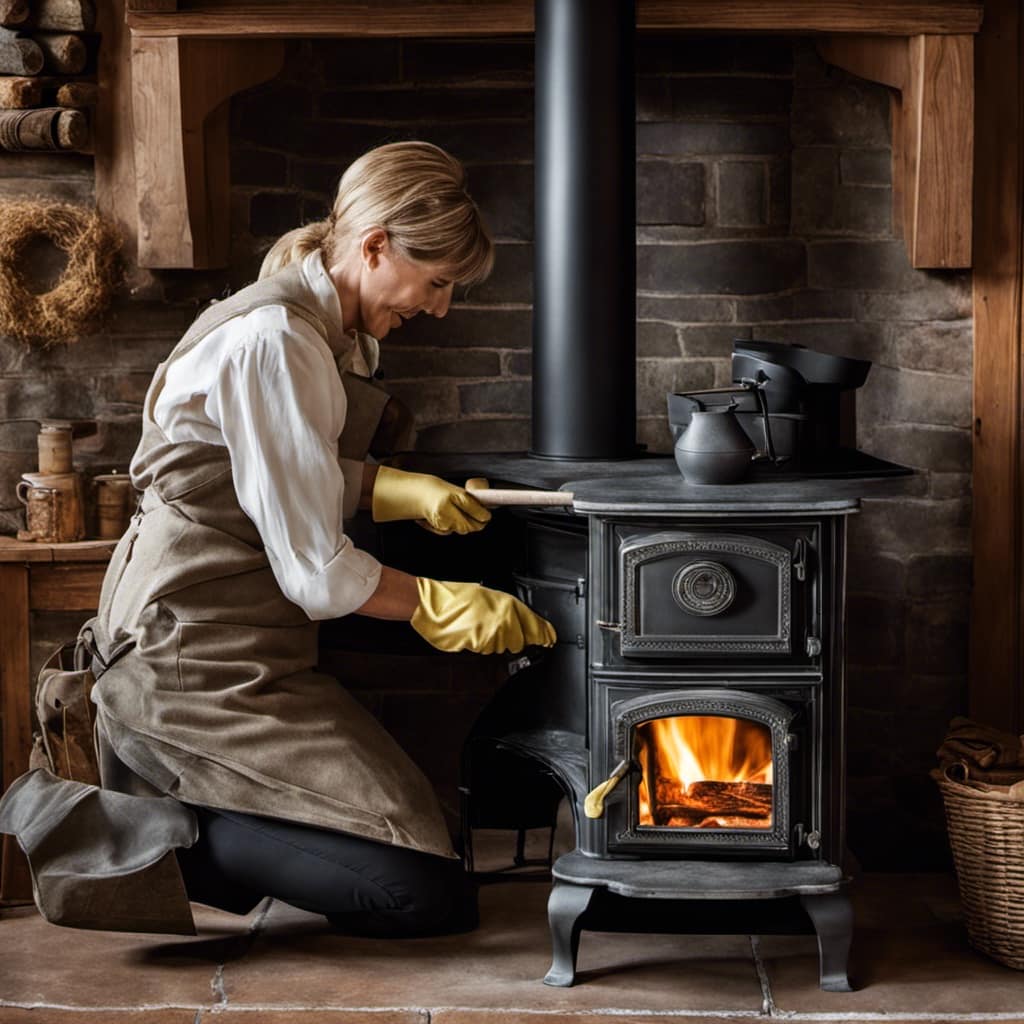
Reinstalling and Testing the Cleaned Heat Exchanger
After completing the thorough cleaning, I carefully reinstall the newly cleaned heat exchanger and proceed to test its functionality.
When reassembling the heat exchanger, it’s crucial to follow proper reinstallation techniques to ensure optimal performance. Firstly, I align the heat exchanger with the mounting brackets and secure it tightly using the appropriate screws.
Next, I reconnect the inlet and outlet pipes, ensuring a tight seal to prevent any air or heat leakage. Once the heat exchanger is securely in place, I turn on the wood stove and observe its operation.
In case of any issues, common troubleshooting steps can be taken. These include checking for air blockages or obstructions in the pipes, inspecting the gaskets for signs of wear or damage, and verifying the proper functioning of the blower motor.
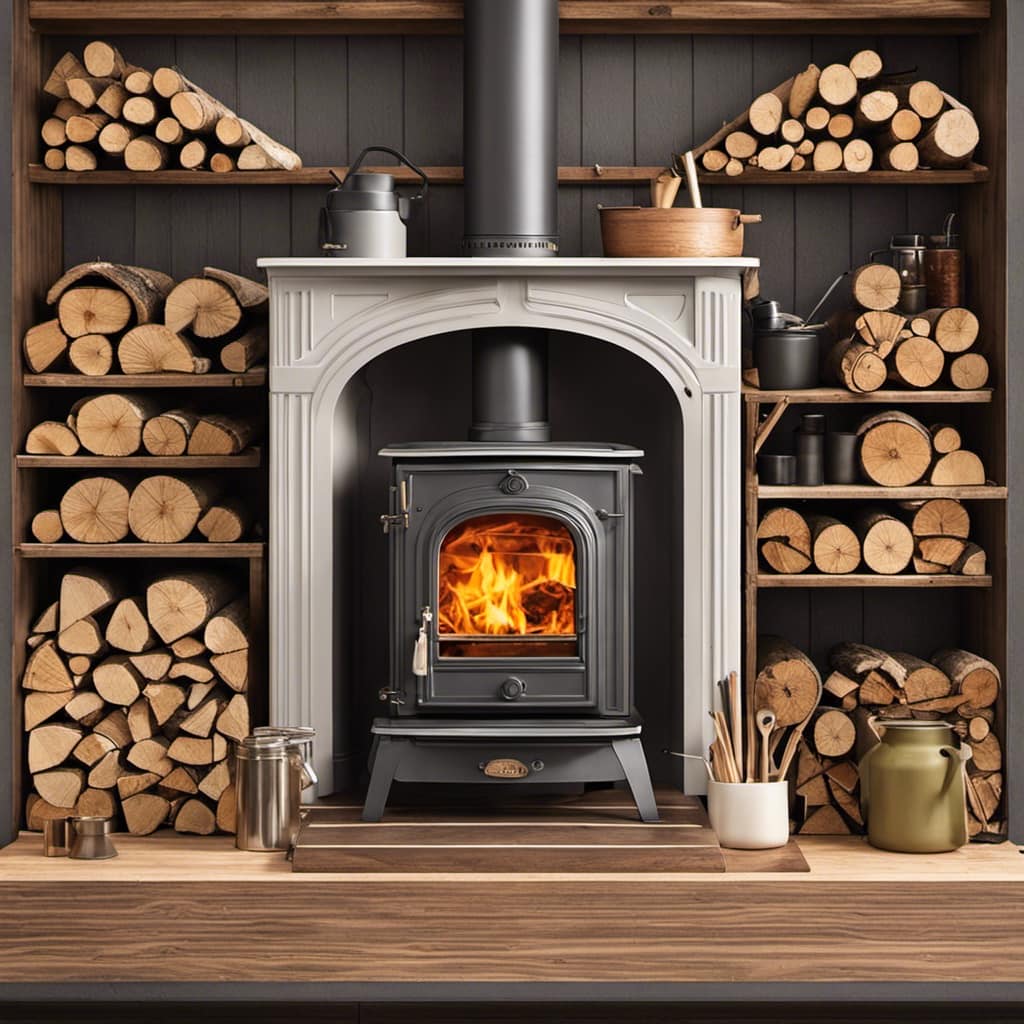
Frequently Asked Questions
Can I Clean the Heat Exchanger Without Removing It From the Wood Stove?
Yes, you can clean the heat exchanger without removing it from the wood stove. There are various cleaning techniques and maintenance tips available to effectively clean the heat exchanger and ensure its optimal performance.
How Often Should I Clean the Heat Exchanger?
Cleaning the wood stove heat exchanger is crucial for optimal performance. Regular maintenance ensures efficiency and prevents build-up. It is recommended to clean it at least once a year using appropriate cleaning techniques to remove soot and debris.
Are There Any Specific Cleaning Solutions I Should Use for the Heat Exchanger?
There are a few specific cleaning solutions that can be used for the heat exchanger, such as vinegar or a commercial stove cleaner. However, alternative cleaning methods like baking soda and water can also be effective.
What Are the Signs That Indicate the Heat Exchanger Needs Cleaning?
Regular maintenance is crucial to prevent heat exchanger damage. Signs of a dirty exchanger include reduced heat output and increased fuel consumption. To clean, turn off stove, let it cool, remove exchanger, and use a brush or vacuum to remove built-up debris.
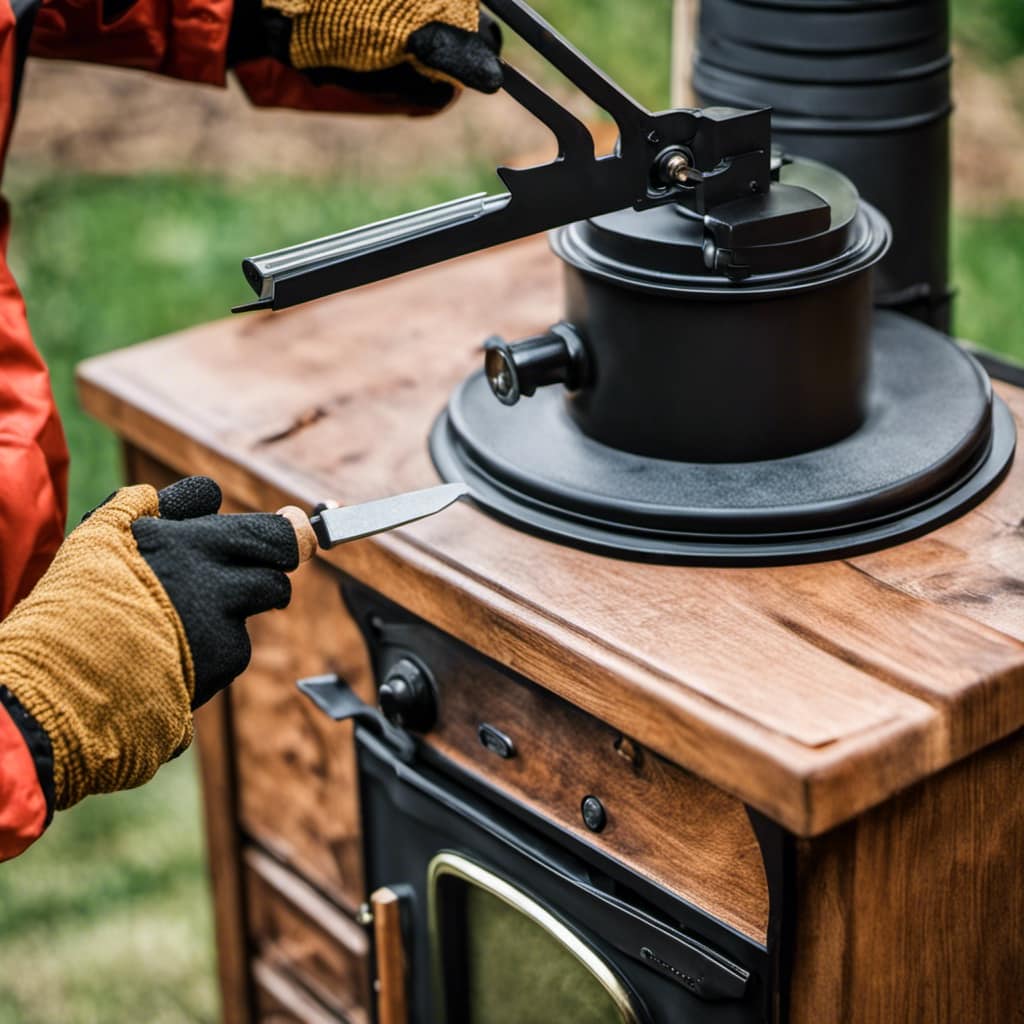
Can I Use a Pressure Washer to Clean the Heat Exchanger?
I wouldn’t recommend using a pressure washer to clean the heat exchanger. It can cause damage and is not safe. There are alternative cleaning methods that are more suitable, such as using a brush and vacuum.
Conclusion
In conclusion, maintaining and cleaning the heat exchanger in your wood stove is crucial for its optimal performance. By following the step-by-step guide and using the necessary tools and supplies, you can effectively remove and clean the heat exchanger.
Regular maintenance and prevention of build-up will ensure its efficiency and longevity. Remember to reinstall and test the cleaned heat exchanger to ensure it’s functioning properly.
Taking care of your wood stove heat exchanger will guarantee a cozy and warm environment for your home.
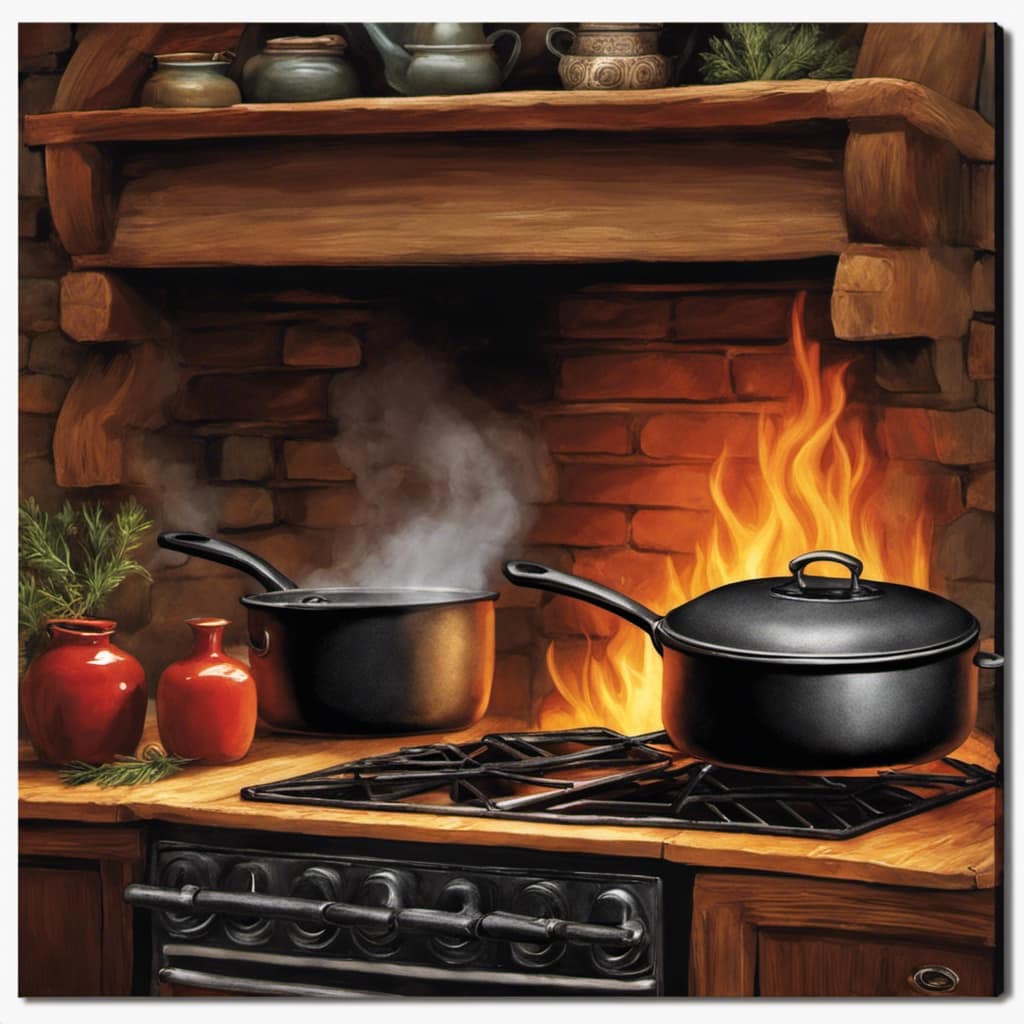
Growing up surrounded by the vast beauty of nature, Sierra was always drawn to the call of the wild. While others sought the comfort of the familiar, she ventured out, embracing the unpredictable and finding stories in the heartbeat of nature.
At the epicenter of every remarkable venture lies a dynamic team—a fusion of diverse talents, visions, and passions. The essence of Best Small Wood Stoves is crafted and refined by such a trio: Sierra, Logan, and Terra. Their collective expertise has transformed the platform into a leading authority on small wood stoves, radiating warmth and knowledge in equal measure.






